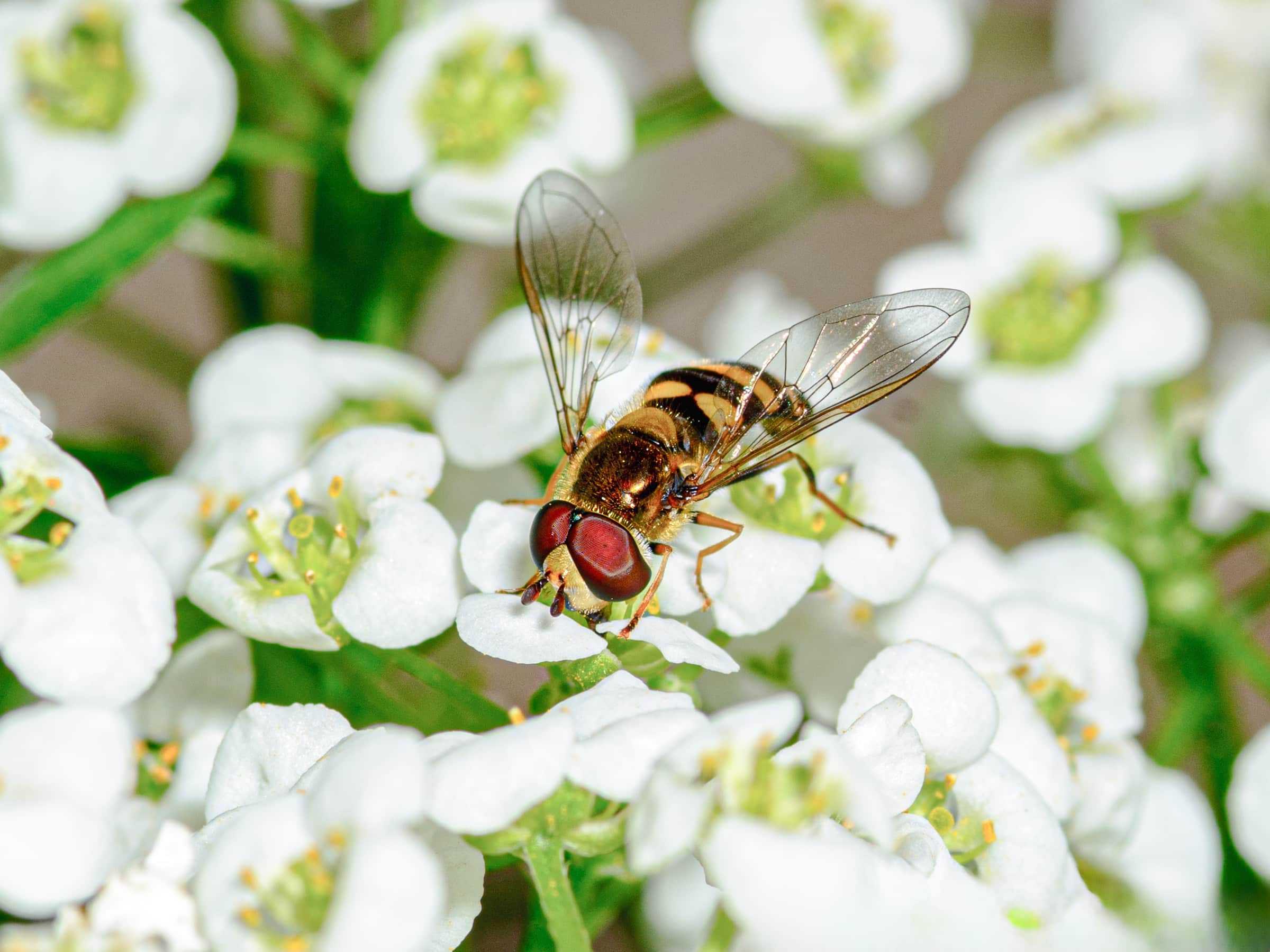Eupeodes americanus
Target pests:
The larva of the American Hoverfly may eat 1700-2200 aphids in its short (one week) larval stage making it the greatest consumer of aphids of common commercially available predators. Because of its vermiform larval shape (worm like) it goes undetected amongst aphid colonies and feeds without causing aphid defences.
In most crops it is secondary to control of aphids by Aphidoletes aphidimyza because its adult stage requires both pollen and nectar to become gravid and survive its full 3-4 week adult stage. While a cage with a flowering plant like alyssum, or a flowering crop, is suitable to hold adults before release, they require 3-5 days of pollen and nectar before eggs are laid in aphid colonies. Releasing the hoverflies from such a cage or into flowering crops like peppers and some ornamentals has been a strategy for aphid prevention that works well, but is still better with concurrent releases of Aphidoletes or Micromus variegatus.
Studies in Europe have found that similar hoverflies can be used effectively for both pest control and pollination in strawberries. The use of hoverflies increased the percentage of marketable fruit.


Package details:
Currently we sell Eupeodes americanus in a tray of vermiculite with 50 pupae which emerge as adults upon receipt.
A product of Eupeodes americanus eggs is expected in the near future.
Have questions about finding the right product? Contact us
